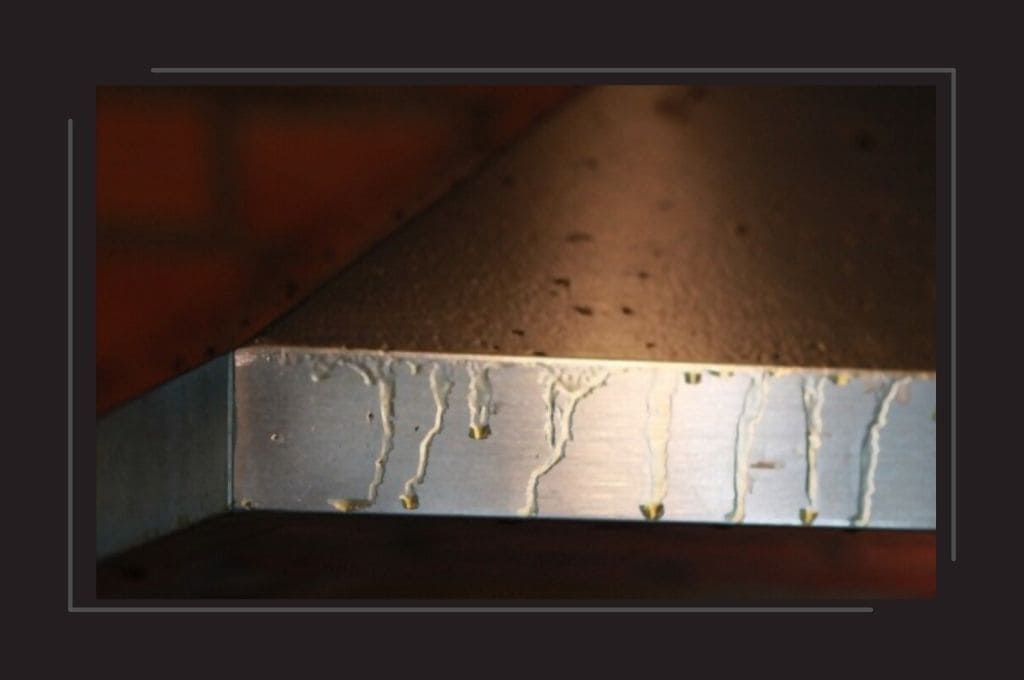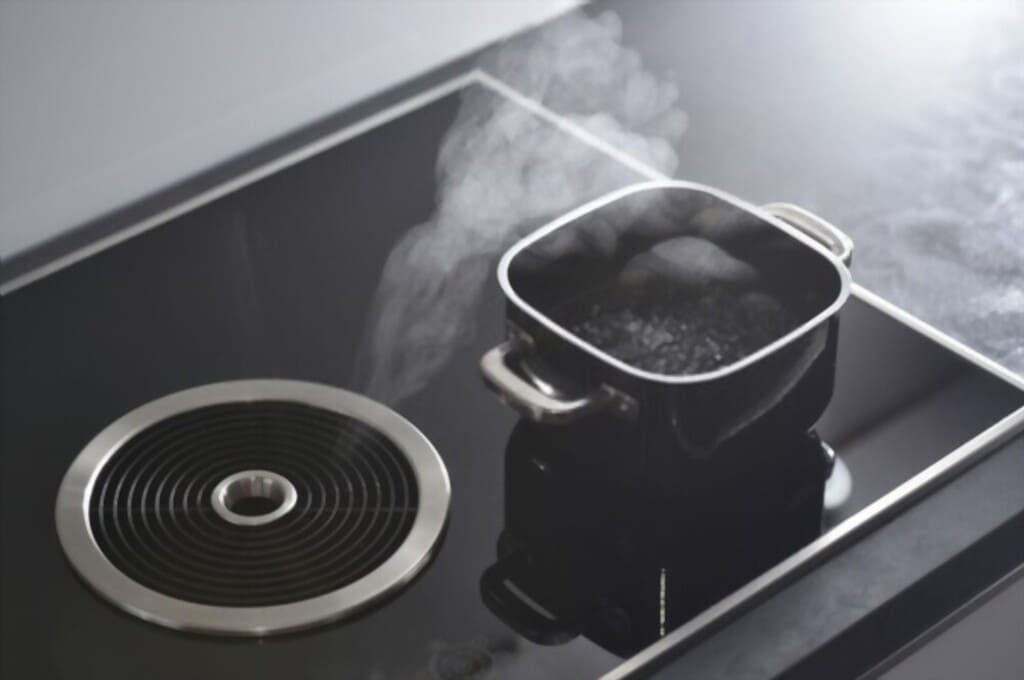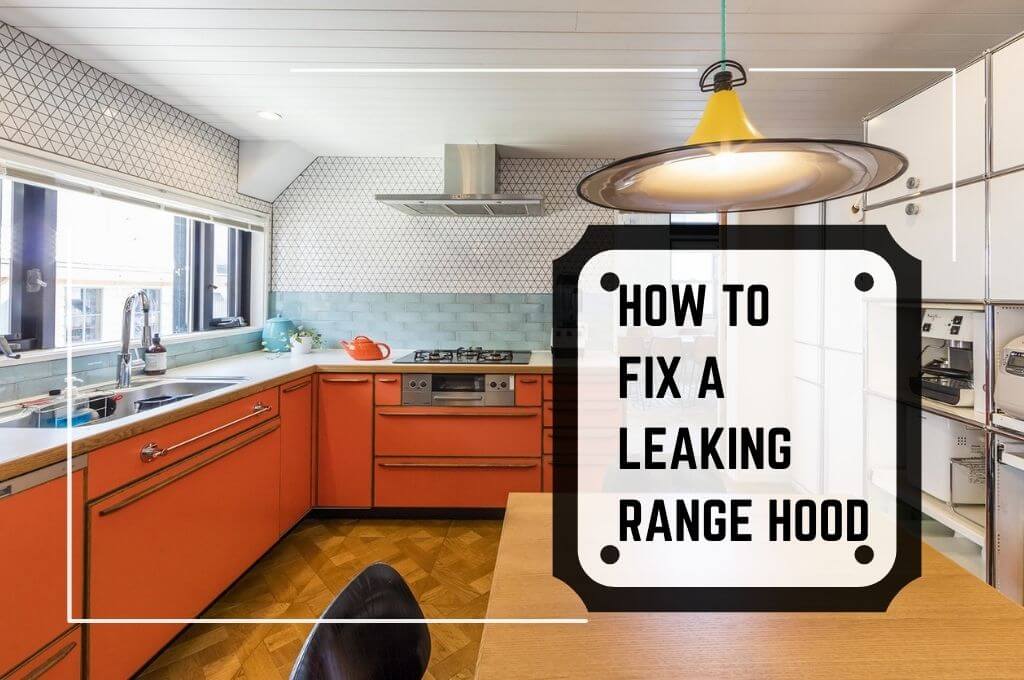5 Clarifications On How To Fix A Leaking Range Hood
A Range hood is dedicated to cleaning the toxic air in the kitchen and giving a healthy environment. If this valuable kitchen appliance continues to ruin the kitchen environment by leaking water, grease or oil, that creates a really embarrassing situation.
Whenever that happens, the range hood can easily make you upset because it isn't doing what it is supposed to do. So today, we're going to talk about why a range hood dripping water and grease. After that, we'll explain how to fix a leaking range hood.
Reasons for Leaking Range hoodsSeveral factors are responsible for range hoods leaking. The range hood will continue to leak if you don't fix those problems. As a result, the range hood will present an unbearable and unhealthy environment where the range hood is dedicated to providing a comfortable environment. Therefore, you must know what causes a range hood to leak.
You can repair your range hood yourself if you know where and why the leak occurs without any additional cost. Today, we will explain how to keep your range hood from leaking.
Many people report that their range hood leaks oil or grease. There is also a complaint that water is leaking through the range hood. So, let's figure out why a range hood dripping water and grease or oil.
If Range hood is Leaking Grease or Oil
- The filter is Full
A filter on a range hood is captured and holds germs to release the purified air back into the kitchen. Similarly, if the grease filter is full, it can cause grease dripping from range hood. The filter leaks grease to carry extra pressure when it is filled with suctioned toxic grease. Ordinary greases are rolled down the back of the range hood. Therefore, if you want to overcome this problem and avoid it in the future, you should degrease it once every two months.
Even after cleaning the filter, your range hood may continue to leak grease. Check for a grease cup or trap located underneath the hood. Moreover, some range hoods provide grease cups and traps for storing extra grease. If you don't know where it is, look at your user's manual. Upon finding it, it should be removed and washed to reattach it.
- Range hood is Unclean
In case you haven't cleaned the inside of your range hood for quite a while, grease, oil, dust, and other gunk will accumulate there, and later these will drip onto grease or oil. Therefore, the inside of the range hood has to be cleaned regular basis. If grease is found inside the cavity, use a sponge or dry cloth to make it degrease. To protect yourself from any untoward incident, you should turn the switch or power line off before working inside the Rangehood.
To get rid of this problem, keep the inside and outside of the range hood repeatedly clean by degreaser with a dry cloth or sponge. Then, in the future, you won't have problems with your range hood leaking oil and grease if you keep the grease cup and filter clean, as explained above.
- The fan doesn't Work

If all the burners in your cooktop are on, you use them for heavy cooking, such as boiling and frying. It is necessary to use the same fan speed in this case in order to adjust for differences in the cooking process. But conversely, if you do heavy cooking with a low fan speed, the exhaust fan will be unable to ventilate at the level of grease generated there. This causes excess oil to accumulate inside the range hood and subsequently dripping. Therefore, adjust the range hood fan speed accordingly to keep up with the level of cooking and the amount of the burners.
Exhaust fans also present another problem. The thing is that if any fan of the exhaust fan is broken, it won't work according to the recommended level of air ventilation. Meanwhile, you need to check whether any fan of the exhaust fans is broken. If any fans are damaged, you have to re-install it with a new one.
If Range hood is Leaking Water- The ducting doesn't work
Whenever water is boiled in the kitchen stove, it produces vapor smoke that is sucked up by the range hood and forced out through the ducting. When the ducting activity isn't conducted properly, the steam accumulates as water, then the range hood leaking water. In addition, insufficient suction from the exhaust fan could lead to improper ducting activities.
- Problem with temperature
Due to the difference in steam between hot and cold temperatures, the vapor gradually condenses in the ductwork pipe of the range hood, which leaks down as a level of water from being frozen. During extremely cold weather, this problem is more noticeable. These steamy, hot winds in the pipes are responsible for this problem on cold days. The accumulation of snow and ice on a roof causes it.
- Obstacles in the ductwork
Water leaking into the range hood is more likely to occur when the normal functioning of the ductwork is disrupted. For example, grease accumulates in the ductwork for an extended period of time and creates a hard state. It causes a blockage in the ductwork. Again, many birds make their haunts towards the outward wind, which can also cause obstructions. These obstructions create various problems, including leakage in the ductwork pipe. In consequence, the range hood vent leaking water. Furthermore, if the ductwork ceiling has a defect installation, water may enter from the roof through that hole.
How to Fix a Leaking Range hood
The 3 Best Degreaser for Range Hood Cleaning1. Puracy Multi-Surface Cleaner Concentrate - Best ValueWe recommend you to check out the following 3 best degreasers for range hood cleaning from Amazon, If you do not have a degreaser at home:

Puracy is a non-toxic nature-friendly best degreaser for range hood. It's made only of natural plant extracts without any toxic chemicals. Puracy cleaner is free from sulfates, phosphates, animal by-products, dyes, synthetic fragrances, chlorine, petrochemicals, and any harmful chemicals.
It is available in two scents, Organic lemongrass, and Green tea and lime. You can use it to clean your oven, your counters, and more. This Puracy degreaser for range hood cleaner is factory tested by doctors and chemists and is ranked by The New York Times as Best All-Purpose Cleaner." Hence you will not get disappointed if you use this.
Check On Amazon2. Krud Kutter 305373 Kitchen Degreaser All-Purpose Cleaner

The cleaner can clean everything from kitchen cabinets to garden benches. Just spray on the grease, then wipe the dirt with a dry towel after a few moments. It is even safer for your pet. This is because it is made without harmful substances like ammonia, bleach, and any harsh chemicals so that the space or products you use are clean and safe. But remember, Krud Kutter cleaner is suitable for stainless steel products but cannot be used on an aluminum surface, unfinished wood, or a varnished surface.
Check On Amazon3. Stanley Home Products Degreaser Concentrate - Range hood cleaner
This Stanley is the best degreaser for range hoods because it will remove the build-up grease from the range hood in seconds and turn it into a new one. Range hoods, cookware, countertops, broilers, dishes, tools, bikes, walls, and wherever grease build-up is, this Stanley original degreaser will give excellent results by making that place fresh and clean.
A Stanley Degreaser would be an excellent investment for your home and kitchen because one bottle of Stanley will make 64 gallons of cleaner. After using it, the product will remain clean and shiny for a long time. All three degreasers are entirely safe for you and your family to use. It is also a non-toxic formula of biodegradable and phosphate-free.
Check On AmazonOur guide can help if you are having similar problems to the ones described above.
- Clean the filter: Once your range hood filters, grease cup or, trap are full of grease and dirt, clean them thoroughly with a degreaser. You can also put the filter in the dishwasher, but only if it is dishwasher-safe.
- Patch leak and rebuild the weld: It's rare to occur. Because fire Marshalls perform a light test before an exhaust hood passes inspection to ensure that light cannot be seen coming through the welds. However, if grease is leaking through a hole in the body of your range hood, then call a repairer immediately to patch the leak and rebuild the weld without any whimsical. An unexpected grease leak can turn into a fire hazard at any time and any other type of damage.
- Be sure the fan is working as it should: If the exhaust fan of your range hood does not work accurately, then there are basically two types of problems. One is that either the fan is broken or the fan motor is damaged. The broken fan needs to be replaced with a new one to fix this. Here you might want to consider renting a repairer if you are not confident in your ability to repair this appliance.
- Use wall instead of ceiling ducting: Rainwater may drip down the range hood when ductwork is installed through the roof. If you want to eliminate this problem, you can place ducting activities through the side of walls or below and along the side of the basement instead of the roof ceiling. Otherwise, if you have to use a roof ceiling, place the ductwork in such a way that there are no loops around it or make sure it is through proper arrangements.
- Seal the Ductwork: Kitchen vent ducts must be sealed appropriately against leaks to prevent damaging cooking fumes from accumulating in enclosed areas, such as the attic or walls. So to solve this, first get steel ductwork and determine the shortest and most unimpeded way to bend it out. Before connecting ductwork spans, seal the joints with mastic sealant. Then attach the ducts with 1-4 inch equal screws and finally wrap the outer part with aluminum foil-backed duct sealing tape.
By following the above guidelines, just as you have learned how to fix a leaking range hood, if you follow these guidelines properly, you will get rid of similar range hood dripping water or grease problems in the future. If you don't want this same range hood leaking problem to happen again in the future. In that case, you need to clean the inside regularly and outside of your range hood, clean them before filters are full, and make sure that the fan and ducting activities are being handled properly.
Related Article:
